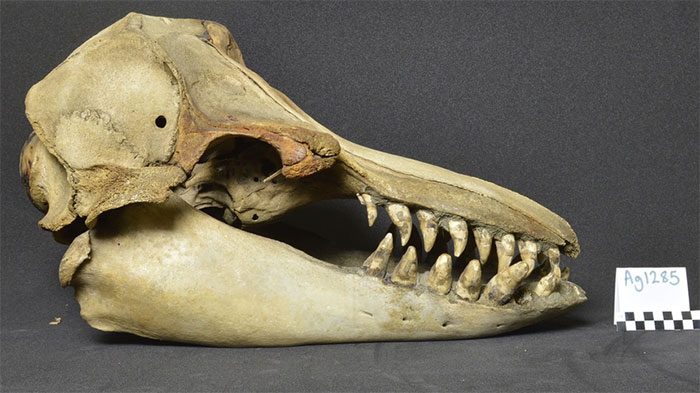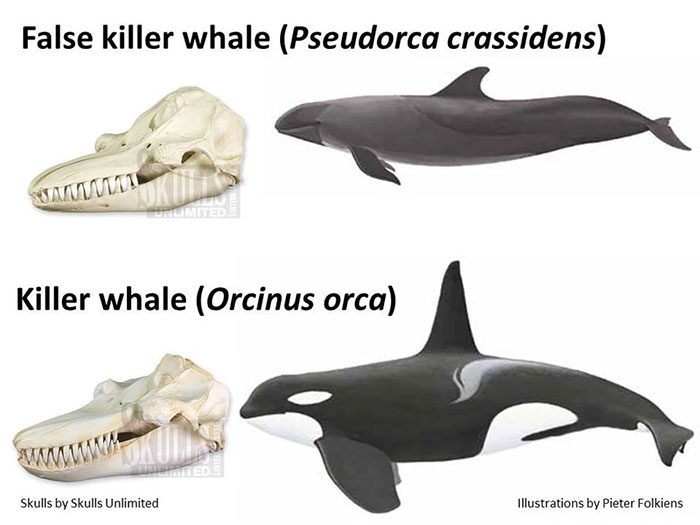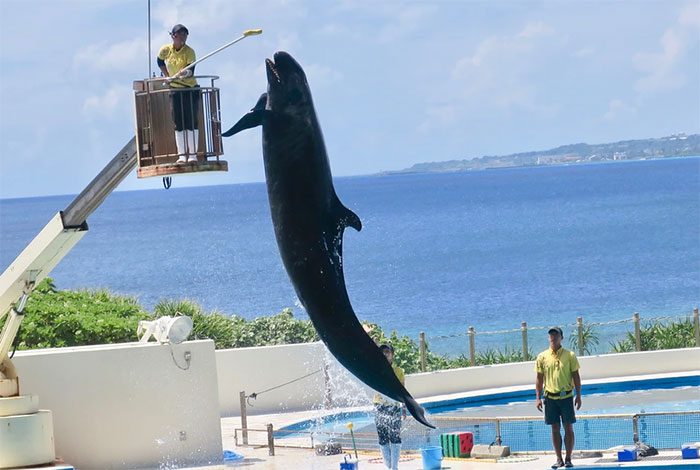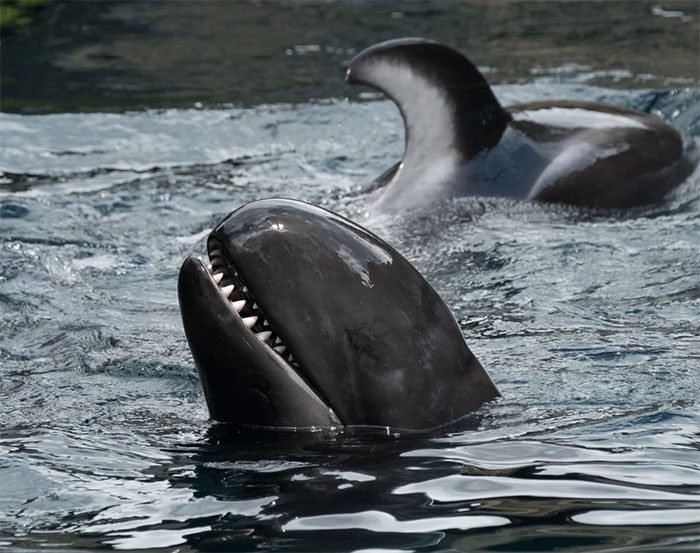The False Killer Whale, scientifically known as Pseudorca crassidens, is a species of dolphin that belongs to the Delphinidae family. It is the third largest member of the oceanic dolphin family and is also referred to as the “pseudorca”!
Why Is It Called the False Killer Whale?
In 1843, a skull of a whale was excavated in the Lincolnshire Moors near Stamford, England, dating back 126,000 years. British paleontologist Richard Owen compared this skull to the skulls of the long-finned pilot whale, beluga whale, and Richter’s dolphin, ultimately placing it in the Porpoise genus and naming it “thick-toothed whale”; in 1846, zoologist John Edward Gray believed that the skull of this “thick-toothed whale” closely resembled that of an orca, so he classified it under the Orca genus. At the time, Gray thought that this species of killer whale was likely extinct.

Illustration.
However, in August 1861, a “thick-toothed whale” actually stranded on the coast of Kiel Bay, Denmark. Zoologist Johannes Theodor Reinhardt studied this stranded “thick-toothed whale.” In November of the same year, another pod of “thick-toothed whales” stranded! With enough specimens, Reinhardt ultimately determined that the “thick-toothed whale” was neither a dolphin nor a killer whale! However, its skull closely resembled that of a killer whale, which led to its alternative name, “false killer whale,” while the Vietnamese name for this species is commonly referred to as cá ông chuông.

False killer whales are sometimes confused with pygmy killer whales; they can be identified by their larger size and unique curved flippers, which differ from those of their species. In contrast to their dark-colored bodies, false killer whales have a lighter underside with patches of light gray or white.
Currently, false killer whales are classified in the Delphinidae family within the subfamily of round-headed dolphins. They do not have a close relationship with true killer whales, but they are more closely related to pilot whales and short-finned dolphins.
False killer whales are commonly found in the Atlantic, Pacific, and Indian Oceans, and are particularly prevalent in tropical or temperate waters. Occasionally, they hunt in shallow waters, but generally, they prefer deeper waters.
False killer whales have an overall black or dark gray color with lighter stripes along their bellies; they have a blunt conical head and a melon-shaped forehead; males can reach lengths of 3.7 to 6.1 meters, while females measure between 3.5 to 5 meters, weighing between 917 to 1,842 kg, with a slender body and pointed flippers; their dorsal fin is crescent-shaped, protruding from the middle of their back, while their pectoral fins are pointed, and their upper jaw extends beyond the lower jaw, slightly protruding.

False killer whales are easily recognized by their long, sleek bodies, black or dark gray coloration. They have a distinctly narrow head with a rounded, protruding snout and no noticeable beak. False killer whales can be identified by their small, slender dorsal fin located in the middle of their back.
False killer whales are also highly social, often gathering in pods ranging from a few individuals to hundreds. In larger groups, they sometimes split into smaller pods, averaging around 18 members. These groups consist of individuals of all ages and genders. Because they always operate in groups, each stranding incident often involves large numbers, with related stranding events occurring almost annually.
Researchers estimate that in the wild, males live an average of 57.5 years, while females have an average lifespan of 62.5 years.

Female false killer whales mature and begin to reproduce around the age of 10. While female false killer whales can live up to 62.5 years, males can live up to 57.5 years.
False killer whales can breed year-round, but peak breeding season occurs from late winter to early spring. If a female does not conceive after her first ovulation, she will continue to ovulate until she becomes pregnant. After giving birth, females will not reproduce again for an average of 6.9 years. Once a false killer whale is born, it is cared for and nursed by its mother for up to 24 months.
False killer whales are carnivorous, primarily feeding on fish and squid, but they occasionally hunt some marine mammals like seals and sea lions. However, surveys have shown that their strandings often occur due to chasing seals into shallow waters.

It is estimated that there are about 60,000 false killer whales in the oceans. However, the exact number is unknown as this species is difficult for scientists to study accurately.
The main threat to false killer whales comes from human hunting because they pose a threat to fishing; they can learn to tear fishing nets to steal fish from fishermen’s catches. In some areas of the eastern tropical Pacific, they are even hunted for their meat.
Although false killer whales are hunted and stranded en masse each year, their populations are still considered stable. Therefore, some countries continue to hunt them for food or consider them a threat to fisheries, while most other countries list them as protected species.
- Three species of animals with extraordinary regenerative abilities, one of which can survive in space!
- The tragedy of asbestos: A level one carcinogen still found in your home
- A type of seafood that helps “clean out fat,” good for cardiovascular health, abundant and easily available in coastal Vietnam



















































